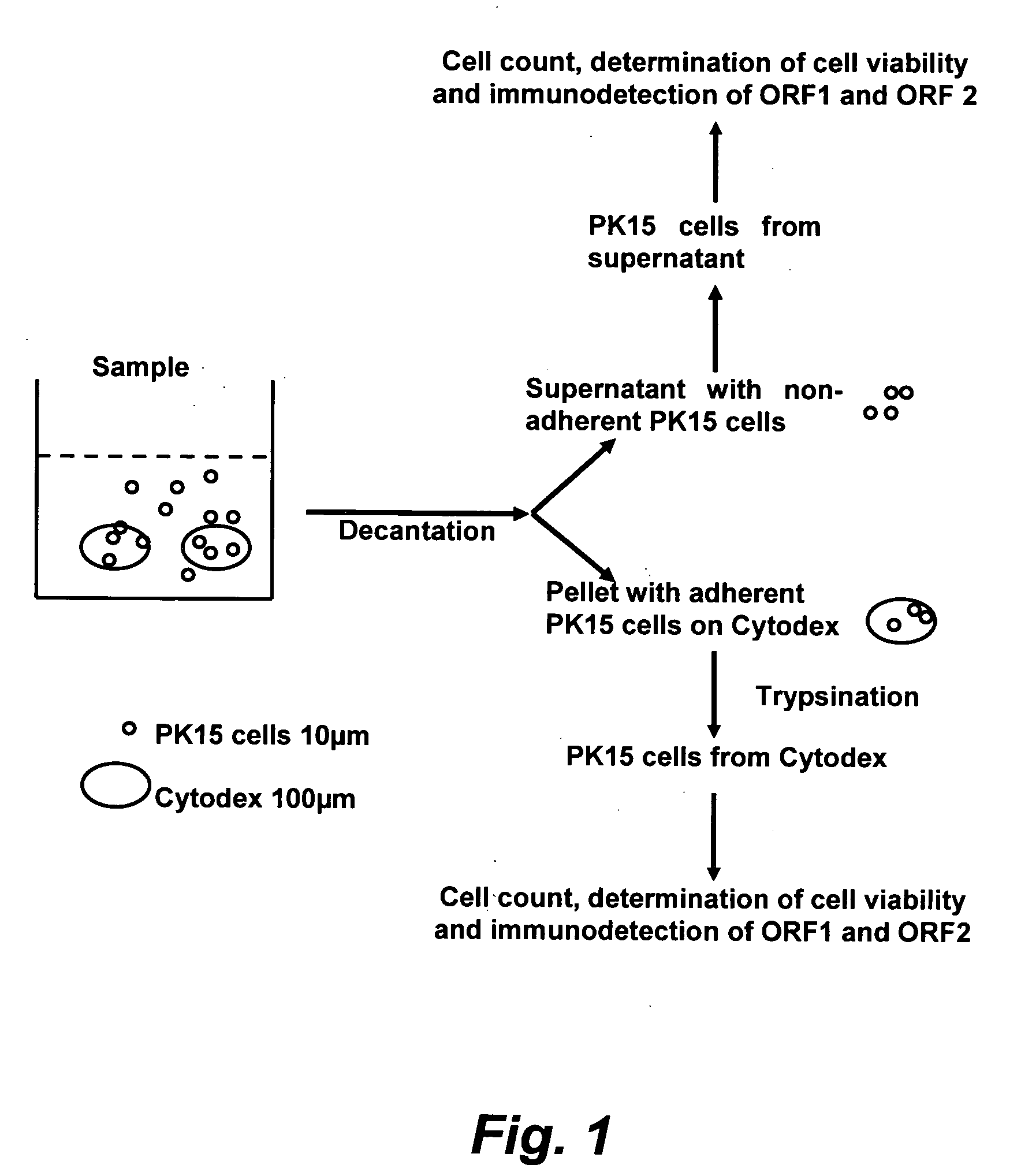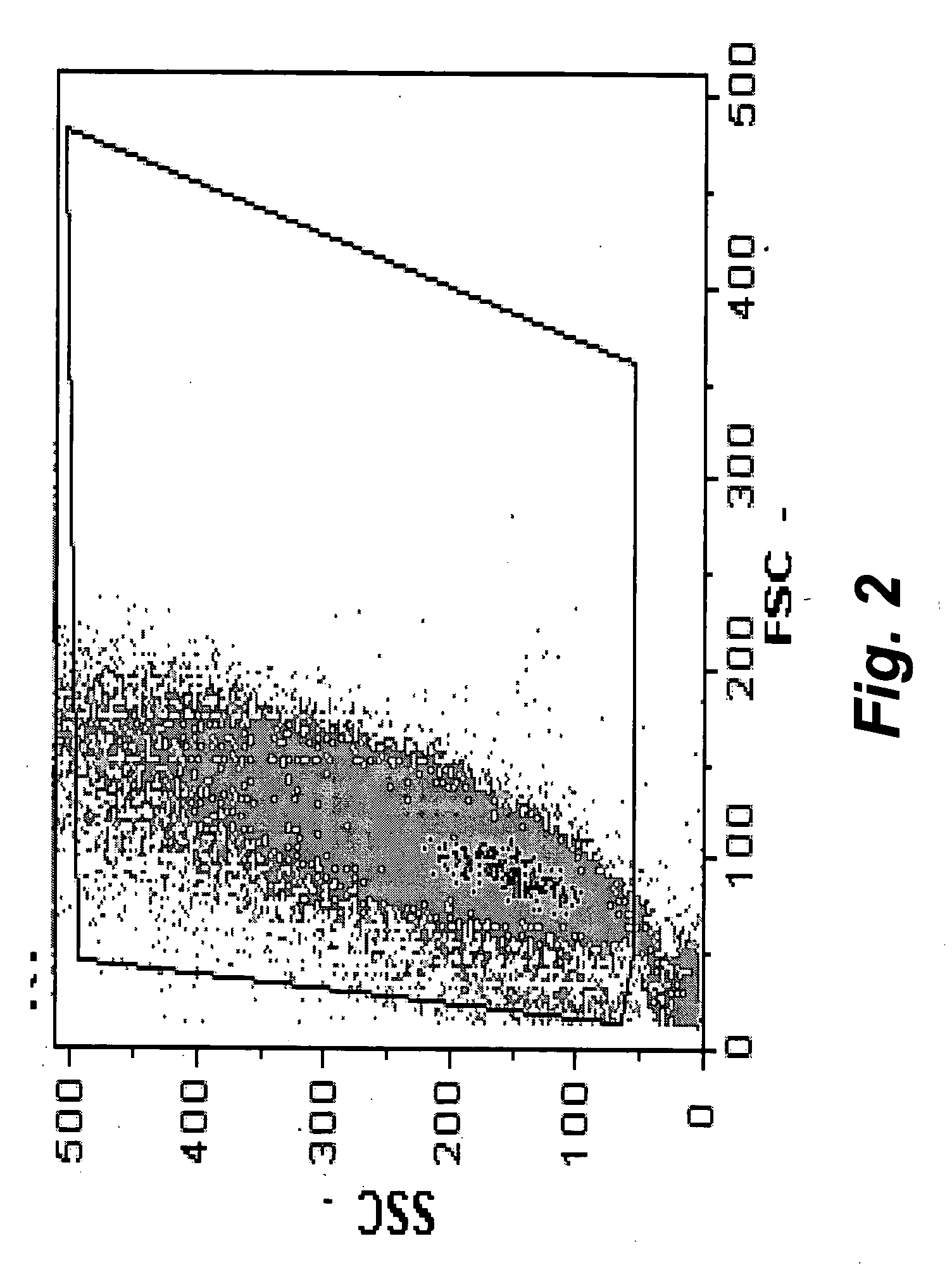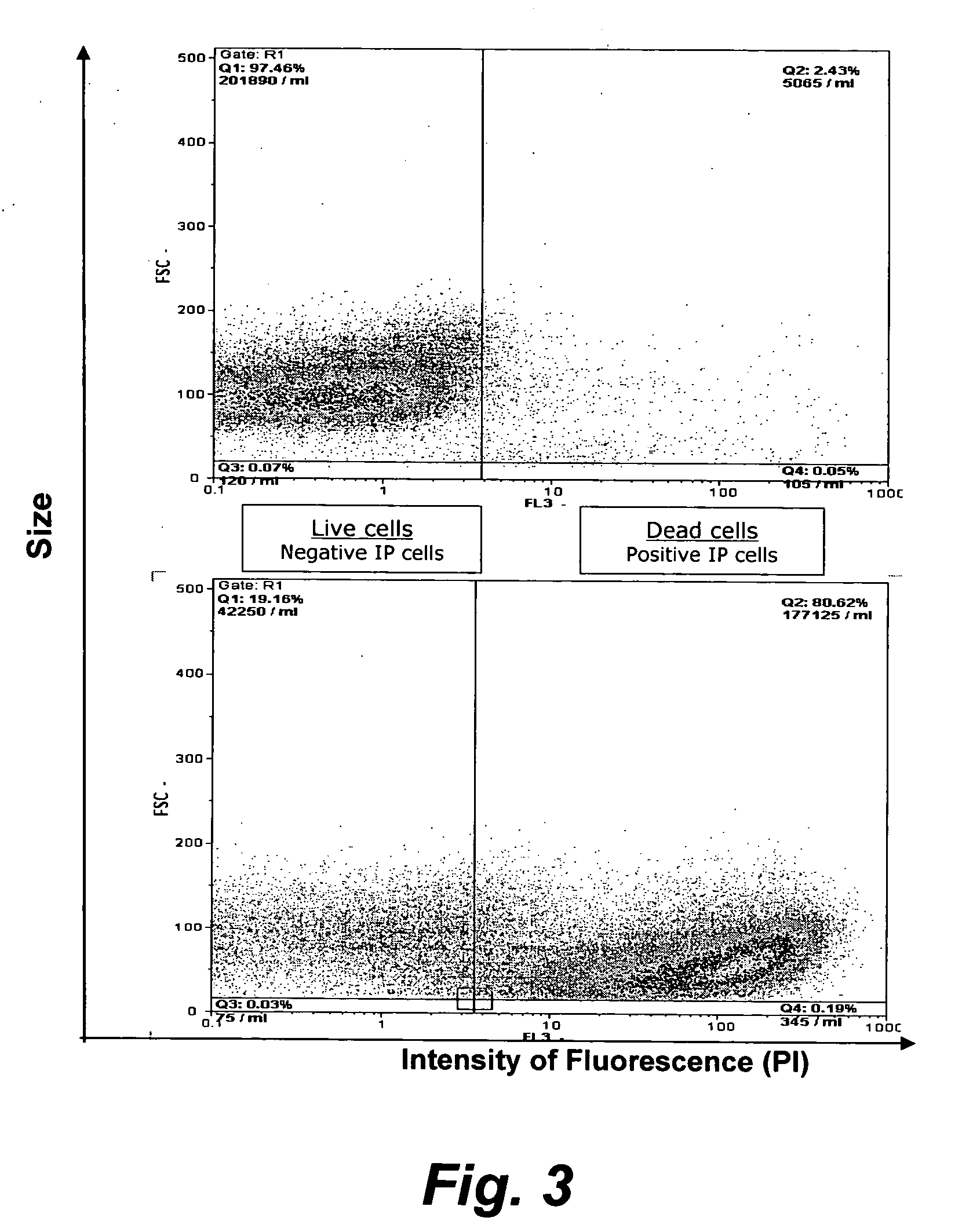Assay for porcine circovirus production
- Summary
- Abstract
- Description
- Claims
- Application Information
AI Technical Summary
Benefits of technology
Problems solved by technology
Method used
Image
Examples
example 1
Correspondence between the Designations of ORFs of Circovirus PCV2
[0081] The ORFs of circovirus PCV2, their equivalent designators, and the respective sources thereof, incorporated herein by reference in the entirety, are shown in Table 1 below. ORF1 and ORF2, as described by Meehan et al. (1997; 1998) have been alternatively designated as ORFs 4 and 13 respectively.
TABLE 1PCV2 ORF numbering and equivalentsORFNumberingAlternative DesignationsSourceMeehan et al.U.S patent applicationU,S Patent Serial Nos.J. Gen. Virol.Ser. No. 200201066396,368,601, 6,391,314,78:221-227to Wang et al.6,660272, 6,217,883,(1997)6,517,843, 6,497,883114261327431054565371829610811912111312
example 2
Assay of Viability, Detecting ORF1 and ORF2 in PCV2-Infected PK-15 Cells
(a) Determination of cell Counts and Cell Viability
[0082] Propidium iodide was used to assess plasma membrane integrity. Propidium iodide is a fluorescent vital dye that contains nucleic acid. Dead cells incorporate propidium iodide which was detected as a red stain by flow cytometry using a Galaxy cytometer (other similarly functioning models of flow cytometer may be used). This cytometer has the capability to differentiate, detect and count cells that are unstained (viable) or propidium iodide stained (dead). The number of cells in a volume of 200 μl is determined according to the manufacturer's instructions for the particular model of cytometer used.
[0083] 1 ml of cell suspension was prepared in PBS in a tube specific for the Galaxy cytometer. The dilution of the cell suspension was adjusted to have between about 2×104 to about 1×106 cells per ml (corresponging to the linearity value of the cytometer coun...
example 3
PK-15 Count and Viability after PCV2 Inoculation in Batch Seed Cultures
[0090] As shown in FIG. 3, At day 5 of the incubation period of a batch seed culture of PCV2 virus growing on PK-15 cells, 50% of the host cells were located in the supernatant and were mostly dead (73%). In contrast, 50% of the host cells were located on the CYTODEX™ (Amersham Biosciences, Inc) substratum support and were almost entirely a viable population (96%).
[0091] PCV2-infected PK-15 cells were detected at the end of the culture at day 5, but only in the supernatant cells using flow cytometry to detect ORF1 and ORF2. As shown, for example, in FIG. 6, the kinetics of the viral-specific antigen formation was dependent on the ORF: ORF1 was produced early and at low levels whilst ORF was produced later in the incubation cycle and at increasing levels.
PUM
 Login to View More
Login to View More Abstract
Description
Claims
Application Information
 Login to View More
Login to View More - R&D
- Intellectual Property
- Life Sciences
- Materials
- Tech Scout
- Unparalleled Data Quality
- Higher Quality Content
- 60% Fewer Hallucinations
Browse by: Latest US Patents, China's latest patents, Technical Efficacy Thesaurus, Application Domain, Technology Topic, Popular Technical Reports.
© 2025 PatSnap. All rights reserved.Legal|Privacy policy|Modern Slavery Act Transparency Statement|Sitemap|About US| Contact US: help@patsnap.com



